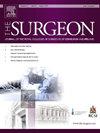选择性骨科手术中一次性用品对环境的影响及其污染水平。
IF 2.3
4区 医学
Q2 SURGERY
Surgeon-Journal of the Royal Colleges of Surgeons of Edinburgh and Ireland
Pub Date : 2025-08-12
DOI:10.1016/j.surge.2025.07.007
引用次数: 0
摘要
背景:自20世纪80年代以来,一次性用品在手术室占主导地位,最初被认为在维持医院支出的同时具有较低的手术部位感染和职业性血液暴露风险。由于有关气候变化的讨论,可重复使用的手术服和窗帘的话题自然出现了。考虑可重复使用的替代品是减少手术室碳足迹的下一步。方法:收集某骨科择期医院4周内93例一次性用品废弃物,包括膝关节置换术及关节镜、髋关节置换术、足踝关节及上肢。止血带的使用、手术时间和出血量是每次手术的其他参数。对一次性长袍进行目视检查,并按污染程度分级。使用手持式电子秤称医疗废物的重量。结果:膝关节、髋关节和下肢(上肢、足部和踝关节)手术室的平均废物量分别为3533g、3966g和2349g。每个病例使用的长袍的平均数量是四件,窗帘的数量也是如此。小手术室的污染程度最低,84.34%的手术服完全没有污染。止血带的使用与更少的废物、碳排放和长袍污染有关。结论:手术室废弃物的很大一部分是一次性用品,如手术衣和窗帘。在选择性矫形设置中,这些没有严重污染,特别是在使用止血带的程序中。鉴于医疗废物对环境的影响,我们提倡在这些程序中使用可重复使用的替代品。本文章由计算机程序翻译,如有差异,请以英文原文为准。
Environmental impact of single-use items and their contamination levels in elective orthopaedic surgery
Background
Single-use items have dominated operating theatres since the 1980s, initially perceived to carry a lower risk of surgical site infection and occupational blood exposure while maintaining hospital expenditure. The topic of reusable surgical gowns and drapes has naturally emerged due to discussions regarding climate change. Considering reusable alternatives is the next step in reducing the carbon footprint of operating theatres.
Methods
Clinical waste attributable to single-use items was collected from 93 cases in an elective orthopaedic hospital over four weeks, comprising knee arthroplasty and arthroscopy, hip arthroplasty, foot and ankle and upper limb. Tourniquet use, operation time and blood loss were other parameters collected in each operation. Disposable gowns were visually examined and graded by contamination level. Clinical waste was weighed using a handheld electronic scale.
Results
The mean waste from knee, hip and minor (upper limb, foot and ankle) operating theatres was 3533g, 3966g and 2349g respectively. The average number of gowns used per case was four, as was the number of drapes. Minor operating theatres had the lowest levels of contamination, with 84.34 % of gowns not contaminated at all. Tourniquet use was associated with less waste, carbon emissions, and gown contamination.
Conclusion
A large proportion of operating theatre waste is attributable to disposable items such as gowns and drapes. In the elective orthopaedic setting, these are not heavily contaminated, especially in procedures where tourniquets are utilised. Given the environmental impact of clinical waste, we advocate for the use of reusable alternatives in these procedures.
求助全文
通过发布文献求助,成功后即可免费获取论文全文。
去求助
来源期刊
CiteScore
4.40
自引率
0.00%
发文量
158
审稿时长
6-12 weeks
期刊介绍:
Since its establishment in 2003, The Surgeon has established itself as one of the leading multidisciplinary surgical titles, both in print and online. The Surgeon is published for the worldwide surgical and dental communities. The goal of the Journal is to achieve wider national and international recognition, through a commitment to excellence in original research. In addition, both Colleges see the Journal as an important educational service, and consequently there is a particular focus on post-graduate development. Much of our educational role will continue to be achieved through publishing expanded review articles by leaders in their field.
Articles in related areas to surgery and dentistry, such as healthcare management and education, are also welcomed. We aim to educate, entertain, give insight into new surgical techniques and technology, and provide a forum for debate and discussion.

 求助内容:
求助内容: 应助结果提醒方式:
应助结果提醒方式:


